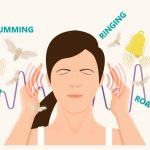Men are abused at an alarming rate and often do not seek help. We don’t often think about male domestic violence, but it happens more than you may think. Society tends to focus more on female domestic violence, and that should change since domestic violence can happen in any family from the top of society on down.
The Data Behind Male Domestic Abuse
When you start to crunch the numbers, you can see that male domestic abuse (also called intimate partner violence) is more common than you think. The National Coalition Against Domestic Violence shares detailed fact sheets each year to report on abuse across all genders. Consider a few of these data points:- More than 10 million men and women experience abuse each year in the United States.
- 1 in 3 women and 1 in 4 men have experienced physical violence by a partner. (This becomes 1 in 4 women and 1 in 7 men who have experienced severe physical violence by an intimate partner.)
- Only 34% of people injured by a partner receive medical care for their injuries.
Male abuse stories look like this
We’ll use Eric’s story to show one example of the impact of abuse on men in violent relationships. This is a man/women couple, but it could just as easily be a man/man couple. Violent relationships happen with all gender combinations, and there is often a cycle of abuse that keeps repeating. Eric and Andrea seemed like a perfect couple. They had cookouts and went camping; they hid the abuse well.Abuse can start like this
The first “incident” happened in September. Eric didn’t show up for a birthday celebration because he tripped on the dog and fell down the stairs. The second time he tripped, friends dismissed the sick feeling and said, “They should really put carpet or something on those stairs.” Other small incidents happened – bruises here, sprains there. They were a couple that drank a lot of beer, so there was speculation alcohol was the caused of the injuries. On Christmas morning Eric was taken to the emergency room. Andrea had attacked him with a baseball bat. The injuries were serious and he required multiple stitches. He had two black eyes, a broken nose, and a few broken ribs. He spent two nights in the hospital and could no longer keep the abuse a secret. After the hospital stay, Eric didn’t go home. Instead, he stayed with a friend. Two weeks later, when the wounds had healed, he went back. A month later she attacked him again, this time by pushing him down the stairs. Eric moved back home to his own family, but still talks with Andrea. They continue to pretend as though nothing happened.How many men are abused
As many as 1 in 3 victims of domestic violence are male. The National Hotline for Domestic Violence reports that:- One in seven U.S. men ages 18 and over in the U.S. has been the victim of severe physical violence by an intimate partner in his lifetime
- One in 10 men has experienced rape, physical violence, and/or stalking by an intimate partner
- In 2013, 13% of documented contacts to the National Domestic Violence Hotline identified themselves as male victims
- Men are abused everywhere
Ways Men Are Abused
According to Helpguide.org:To make up for any difference in strength, your partner may attack while you’re asleep or try to catch you by surprise. Your partner may also use a weapon, such as a gun or knife, or strike you with an object, abuse or threaten your children, or harm your pets.Domestic abuse is not limited to physical violence. Your spouse or partner may also:
- Verbally abuse the man, belittle him, or humiliate him in front of friends, colleagues, or family, or on social media sites
- Be possessive, act jealous, or harass him with accusations of being unfaithful
- Take away his car keys or medications, try to control where he can go and who he sees
- Try to control how he spends money or deliberately defaults on joint financial obligations
- Makes false allegations about him to his friends, employer, or the police, or find other ways to manipulate and isolate him
- Threaten to leave him and prevents the man from seeing his kids if he reports the abuse
- Forces the man to have sex or engage in sexual acts against his will
- Blames the man for the partner’s violent behavior and tells the man he deserves it
Stumbling Blocks: Why Is It So Hard To Leave?
Men are often taught from an early age to hide their feelings or ignore them completely and they shouldn’t hit girls. They are told to just “suck it up.” According to Helpguide.org, it’s difficult to leave any abusive relationship, but men in particular face:- Skepticism from police
- Major legal obstacles, especially when it comes to gaining custody of his children from an abusive mother
- Shame from being hurt by a woman
- A lack of resources and support specifically geared towards men
What A Man Can Do When Trapped In An Abusive Relationship
A partner will often follow up incidences of abuse with apologies and promises to never harm again. A partner will even promise to go to counseling or take a class. This is a common cycle of abuse. Be on guard until you actually see changes. It’s a good idea to:- Keep at least $20 cash and car keys in your pocket at all times
- Have your phone and legal documents close by
- Back your car into the driveway in case you need to make a quick get away
- Have a reason to leave in mind so you can exit before things escalate
- Confide in someone – Abusers isolate their victims
- Take pictures of the physical evidence
- Add domestic hotline phone numbers to your phone for quick reference
Where can men find help in the U.S.
While it is more difficult to find male-specific resources for abused men, help is available. The National Domestic Abuse Hotline, 1-800-799-7233 (1-800-799-SAFE), is ready to help without judgement and offers these additional resources:- Male Survivor provides resources to male survivors of sexual trauma
- Safe Place in Austin, TX provides services and shelter for male victims of sexual assault and domestic violence. We can help you locate shelters in your area, where available.
- Center Against Domestic Violence, based in New York City, offers information and support for male victims
- Helpguide.org: Help for Abused Men
- Lambda’s Anti-Violence Project provides support and resources to LGBTQ victims of violence
- The Mayo Clinic’s website gives more signs and safety precautions for male victims
- Find treatment and counseling for abusive relationships at Recovery Guidance.
Where men can find help in the U.K.
- Freephone National Domestic Abuse Helpline
- Galop (for the LGBTQ community) message on Facebook
- (Wales)
- Calan (Wales)
- Men’s Advice Line message on Facebook
- message on Facebook
- Andy’s Man Club





















